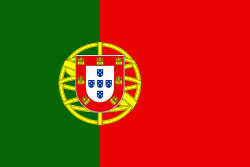Santa Cruz da Graciosa (Santa Cruz da Graciosa)
 |
 |
While the date of its first discovery is uncertain, it is known that its first settlers arrived from the island of Terceira around 1450. One of the first settlers was Vasco Gil Sodre.
The early settlement was primarily agrarian, but by 1486 its population had grown sufficiently to warrant the founding of the vila (or town) of Santa Cruz in 1486, while Praia lost this role.
Between the 16th-17th century, Graciosa was regularly attacked by pirates and privateers, which obliged the local government to construct fortifications along the island's coast for defense.
Over the centuries Santa Cruz was visited by important travellers. The Jesuit António Vieira, who stopped in the village after a shipwreck while returning to Lisbon from Brazil. Later the French writer Chateaubriand, in 1791, whilst fleeing the horrors of the French Revolution stopped in Graciosa en route to America. In 1814, a young Almeida Garret wrote some of his first verses, already a revelation of his budding talents. Finally, in 1879, Prince Albert of Monaco, notable for his oceanographic and maritime studies, stopped in Graciosa and visited Furna do Enxofre. He was one of the first to descend the volcanic chamber using a rope ladder.
The construction of the port in Praia, and the northern aerodrome, were important in breaking the island's isolation and concentration on agriculture.
Map - Santa Cruz da Graciosa (Santa Cruz da Graciosa)
Map
Country - Portugal
 |
 |
| Flag of Portugal | |
One of the oldest countries in Europe, its territory has been continuously settled, invaded and fought over since prehistoric times. The territory was first inhabited by pre-Roman and Celtic peoples who had contact with Phoenicians, ancient Greeks and Carthaginians. It was later ruled by the Romans, followed by the invasions of Germanic peoples and the Islamic invasion by the Moors, whose rule was eventually expelled during the Reconquista. Founded first as a county of the Kingdom of León in 868, gained its independence as the Kingdom of Portugal with the Treaty of Zamora in 1143.
Currency / Language
| ISO | Currency | Symbol | Significant figures |
|---|---|---|---|
| EUR | Euro | € | 2 |
| ISO | Language |
|---|---|
| PT | Portuguese language |















